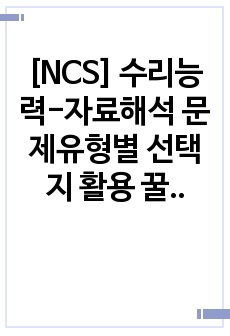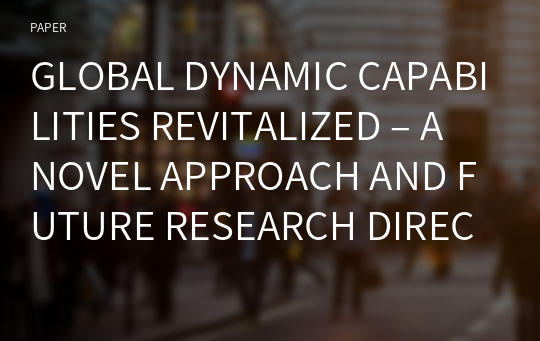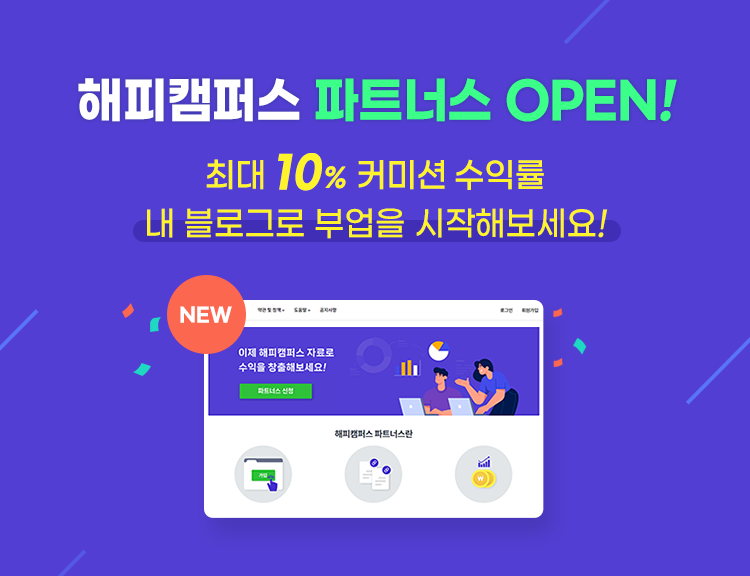GLOBAL DYNAMIC CAPABILITIES REVITALIZED – A NOVEL APPROACH AND FUTURE RESEARCH DIRECTIONS
* 본 문서는 배포용으로 복사 및 편집이 불가합니다.
서지정보
ㆍ발행기관 : 글로벌지식마케팅경영학회(GFMC)
ㆍ수록지정보 : Global Marketing Conference
ㆍ저자명 : Gregor Pfajfar, Maciej Mitręga
ㆍ저자명 : Gregor Pfajfar, Maciej Mitręga
영어 초록
International business ventures are able to survive and succeed in today’s turbulentglobal market only by developing dynamic capabilities. The dynamic capabilities
paradigm proposes for multinationals to integrate, build and reconfigure internal and
external competencies as well as tangible (e.g. financial) and intangible (e.g.
reputational) resources to face environmental volatility (Teece, Pisano & Shuen, 1997;
Morgan, Katsikeas & Vorhies, 2012; Leonidou et al., 2015). However, dynamic
capability development needs the organizational “capacity to extract economic
benefits from current resources and to develop new capabilities” (Luo, 2000). Here
the scholars do not offer a unified view.
Capacity for dynamic capability is most often linked to knowledge exploitation /
innovation capability (e.g. Monferrer et al., 2015), competitor knowledge utilization
(e.g. Luo, 2000), or knowledge- sourcing, generative and integrative capabilities (e.g.
Michailova & Zhan, 2015). When speaking about global dynamic capabilities,
Lawson and Samson (2001) proposed 7-factor model, Chen and Law (2009) 6-factor
model, and Leonidou et al. (2015) 5-factor model. New dynamic capabilities were
born, e.g. networking capability (Mitrega et al., 2012), international marketing
capability (Morgan, Katsikeas & Vorhies, 2012), etc. In spite of various views,
scholars agree that dynamic capabilities generate new forms of competitive advantage
(Teece, 2014; Leonidou et al., 2015) and offer strategic value to the firm (Morgan,
Katsikeas & Vorhies, 2012). Thus, the advancement of the knowledge in this area will
significantly contribute to better performance of export ventures in the future.
This study addresses the equivocal results of international (business relationship) marketing and international business scholars and closes the gap between the two domains by proposing a structured framework towards global dynamic capabilities understanding. We build on two dynamic capability models (see Table 1): (1) antecedents-processes-outcomes model proposed by Eriksson (2014); and (2) strategy, structure and environment model proposed by Wilden et al. (2013). First, following Fang and Zou (2009) we believe that the magnitude and complementarity of resources deployed to create dynamic capabilities will differ depending on the antecedents or outcomes phases compared to dynamic capabilities creation process. Second, following Wilden et al. (2013) we claim that dynamic capabilities need to be aligned with organizational structure, environmental (competitive) intensity and multinational firm’s strategy to have a positive effect on export performance. In essence, the objective of this study is to offer an extensive literature review and answer the question, which are the key components of the future global dynamic capabilities model.
At the end, this multidisciplinary study offers the directions for future research in the
dynamic capabilities area. We suspect future studies will focus on the comparison
between developed and emerging markets (Khalid & Larimo, 2012), as the level of
turbulence in these markets differs leading to unique conditions for multinationals’
dynamic capabilities development. Furthermore, the comparison between
headquarters’ and subsidiaries’ dynamic response to cultural, psychic and economic
differences (Leonidou et al., 2015) might reveal other factors that equally importantly
impact the export marketing strategy implementation effectiveness (Morgan,
Katsikeas & Vorhies, 2012). Finally, we may expect more multidisciplinary studies in
the future (Teece, 2014), particularly in the overlapping dynamic fields of
(international) management, (business relationship) marketing, and humanistic studies.
참고 자료
없음"Global Marketing Conference"의 다른 논문
 THE ROLES OF GREEN PACKAGING IN UGLY FOOD PURCHASE INTE..22페이지
THE ROLES OF GREEN PACKAGING IN UGLY FOOD PURCHASE INTE..22페이지 THE IMPACT OF INDUCED AWE ON ETHICAL TOURIST BEHAVIORS5페이지
THE IMPACT OF INDUCED AWE ON ETHICAL TOURIST BEHAVIORS5페이지 A BIBLIOMETRIC ANALYSIS OF SPIRITUAL TOURISM RESEARCH15페이지
A BIBLIOMETRIC ANALYSIS OF SPIRITUAL TOURISM RESEARCH15페이지 SOCIAL NETWORK ANALYSIS AND RESPONSE TIME TESTING: CONS..11페이지
SOCIAL NETWORK ANALYSIS AND RESPONSE TIME TESTING: CONS..11페이지 THE EFFECTS OF PARA-SOCIAL INTERACTION ON ONLINE CELEBR..3페이지
THE EFFECTS OF PARA-SOCIAL INTERACTION ON ONLINE CELEBR..3페이지 THE INFLUENCE OF OPINION LEADERS ON DAILY DEALS USER’S ..3페이지
THE INFLUENCE OF OPINION LEADERS ON DAILY DEALS USER’S ..3페이지 HOW IMMERSIVE RETAILING AFFECTS CONSUMERS’ URGE TO BUY:..6페이지
HOW IMMERSIVE RETAILING AFFECTS CONSUMERS’ URGE TO BUY:..6페이지 KEY TO SUPERSTARDOM IN A GLOBALISED MARKET: THE ROLE OF..6페이지
KEY TO SUPERSTARDOM IN A GLOBALISED MARKET: THE ROLE OF..6페이지 A POST-PANDEMIC LOOK AT TOURISTS’ PERCEIVED COOLNESS OF..4페이지
A POST-PANDEMIC LOOK AT TOURISTS’ PERCEIVED COOLNESS OF..4페이지 EXTRACTING OFFLINE RETAIL SHOPPING PATTERNS: OLLABORATI..5페이지
EXTRACTING OFFLINE RETAIL SHOPPING PATTERNS: OLLABORATI..5페이지

























